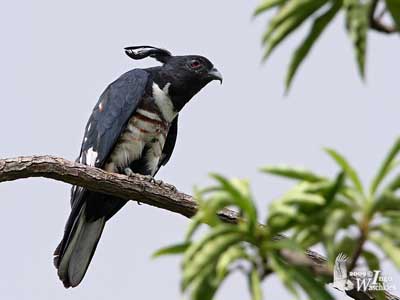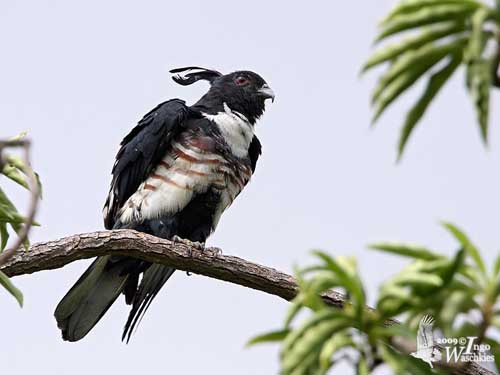
PROTECTION / THREATS / STATUS:
The Black Baza is generally scarce to uncommon, but its unobtrusive habits make it very difficult to see. However, this raptor can be seen in good numbers during the migrations.
The species is threatened by habitat loss due to the deforestation throughout most of its range.
The Black Baza is currently evaluated as Least Concern by Birdlife International.
Fr: Baza huppard
All : Dreifarbenweih
Esp : Baza Negro
Ital: Baza nero
Nd: Zwarte Koekoekswouw
Sd: Svart gökfalk
Photographer:
Ingo Waschkies
My bird pictures on Pbase
Text by Nicole Bouglouan
Sources:
HANDBOOK OF THE BIRDS OF THE WORLD Vol 2 by Josep del Hoyo-Andrew Elliot-Jordi Sargatal - Lynx Edicions - ISBN: 8487334156
RAPTORS OF THE WORLD by James Ferguson-Lees et David Christie - Helm Identification Guides – ISBN: 0713680261
BirdLife International (BirdLife International)
Wikipedia, the free encyclopaedia
XENO-CANTO – Sharing Birds sounds from around the world
Black Baza
Aviceda leuphotes
Accipitriforme Order – Accipitridae Family
BIOMETRICS:
Length: 30-35 cm
Wingspan: 66-80 cm
Weight: 168-224 g
DESCRIPTION:
The Black Baza is a small raptor, often seen in groups of several birds perched on branches in the same tree in the forest.
Adult male has black head, neck and upperparts. Some variable chestnut markings are visible on lower back, scapulars and greater wing-coverts. The secondary flight feathers show chestnut and white patches. The tail is black.
On the underparts, the throat is black. We can see a conspicuous white breast band bordered below by narrow black stripe and variable chestnut band. The belly is more or less rufous barred buff. Vent, undertail-coverts and thighs are black.
On the underwing, the coverts are black. The primary flight feathers are greyish, whereas secondaries and tertials are darker grey. Undertail feathers are greyish.
The head is black with conspicuous long, black crest on the hind crown.
The hooked bill is blackish with dark blue-grey cere. We can see two typical “teeth” on both edges of the upper mandible, one on each side. The eyes are reddish-brown. Legs and feet are dull greyish-black.

The female is similar to the male but she lacks the white patches on secondaries.
The juvenile resembles adults but its plumage is duller and it has white streaks on the black throat, and brown streaks on the white breast band. The crest is slightly shorter than in adults.
We can find three subspecies, A.l. leuphotes, A.l. syama and A.l. andamanica.
The race “syama” has longer primaries and blacker barring on the underparts.
The race “andamanica” has only two bars on the upper belly, and differs by unbarred flanks.
VOICE: SOUNDS BY XENO-CANTO
The Black Baza is vocal in flight and when perched. It utters soft, quavering, plaintive or whistling notes, usually one, two or three. It also gives shrill mewing, something similar to gull’s calls, and a weak scream “chu-weep” or “k-leeep”. Harsh squawks are also given when in groups.
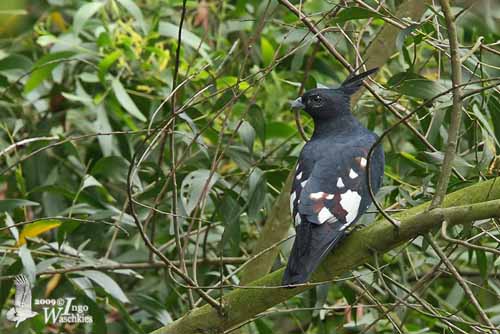
HABITAT:
The Black Baza occurs in open deciduous or evergreen tropical forest, often around clearings and near streams or rivers. This species can be seen from sea-level up to 1500 metres of elevation. This species breeds between 100 and 1200 metres.
They spend the night at communal roost outside the breeding season, and at this period, they often frequent orchards and gardens near villages and they hunt over the ricefields.
RANGE:
The Black Baza occurs in S and SE Asia. Most of the populations are migratory.
The race “syama” from NE India and E Nepal to S China, winters southwards through Indochina and Malay Peninsula to Sumatra.
The race “leuphotes” occurs in SW India, S Burma and W Thailand, and breeds in several parts of Indochina.
The race “andamanica” occurs in S Andaman Islands. The northernmost populations move southwards through the Malay Peninsula to winter in Sumatra.
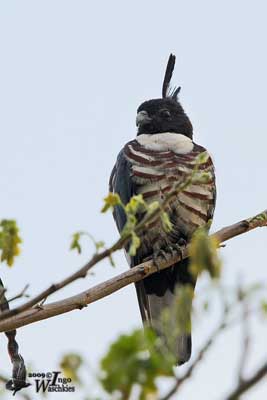
BEHAVIOUR:
The Black Baza feeds primarily on large insects such as grasshoppers. It also catches lizards and tree frogs, and occasionally small mammals, bats and birds.
It hunts from concealed perch, but also in open. It may briefly hover in front of the vegetation to snatch preys from foliage. It performs short flights through the canopy, from perch to perch, and through insect swarms or passerine communal roosts.
The Black Baza hunts sometimes in small flocks and it is more active at dusk.
This raptor is often seen in pairs or in family groups, but this gregarious species occurs also in small groups of 4-5 birds perched in the same tree.
During winter, they sleep at communal night-time roosts in groups of up 20-25 birds.
There is not available information about the aerial displays of this species.
FLIGHT:
The Black Baza soars high in the air during the migrations. But usually, it flies low with deep wing-beats interspersed with short glides on almost flat wings.
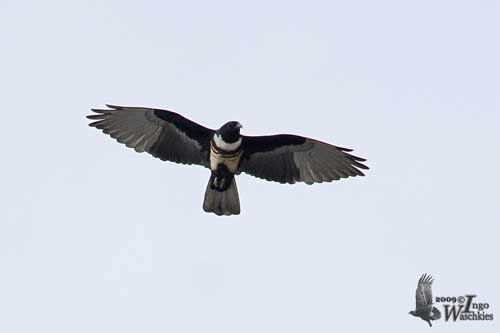
REPRODUCTION:
The breeding season varies according to the range, but usually occurs between February and June.
Both sexes build a small compact nest with twigs and thin sticks in a large tree in the forest, between 20 and 30 metres above the ground and often near water. The shallow cup is lined with soft materials such as grass, plant fibres and green leaves.
The female lays 2-3 eggs and the incubation is shared by both parents. The chicks are fed with insects.
DIET:
The Black Baza feeds primarily on large insects such as grasshoppers, beetles, mantids and moths. It also catches lizards and tree frogs, and occasionally small mammals, bats and birds.
